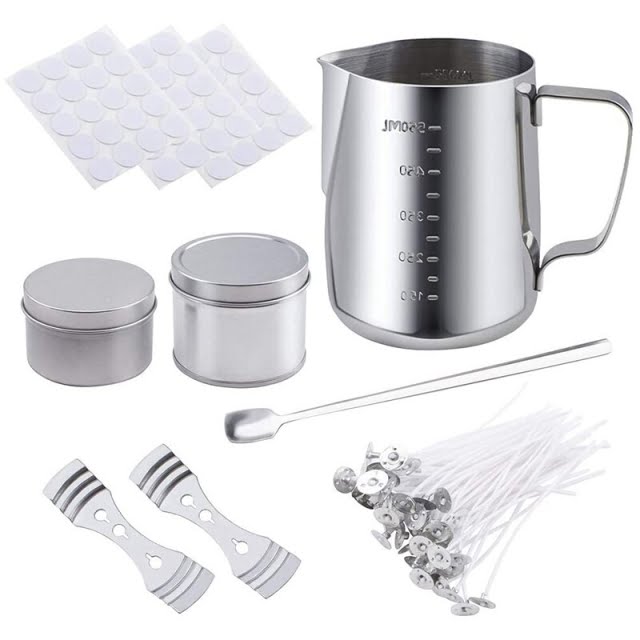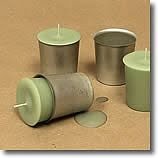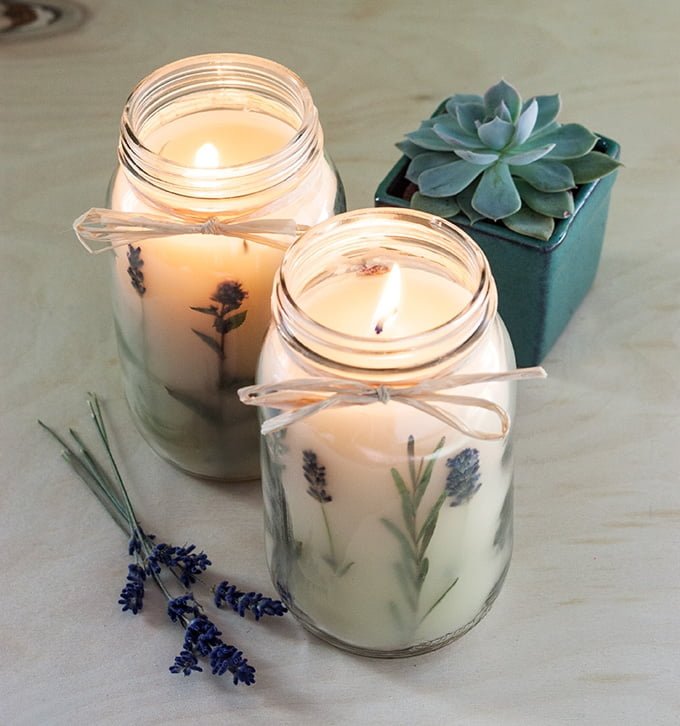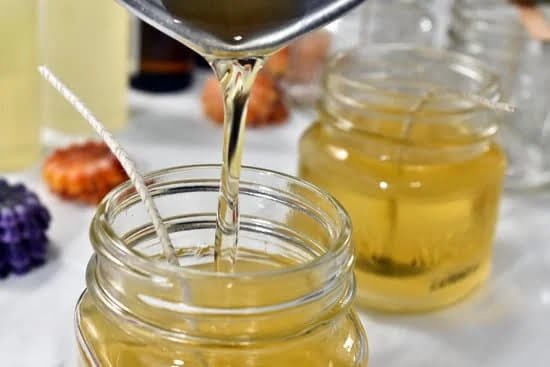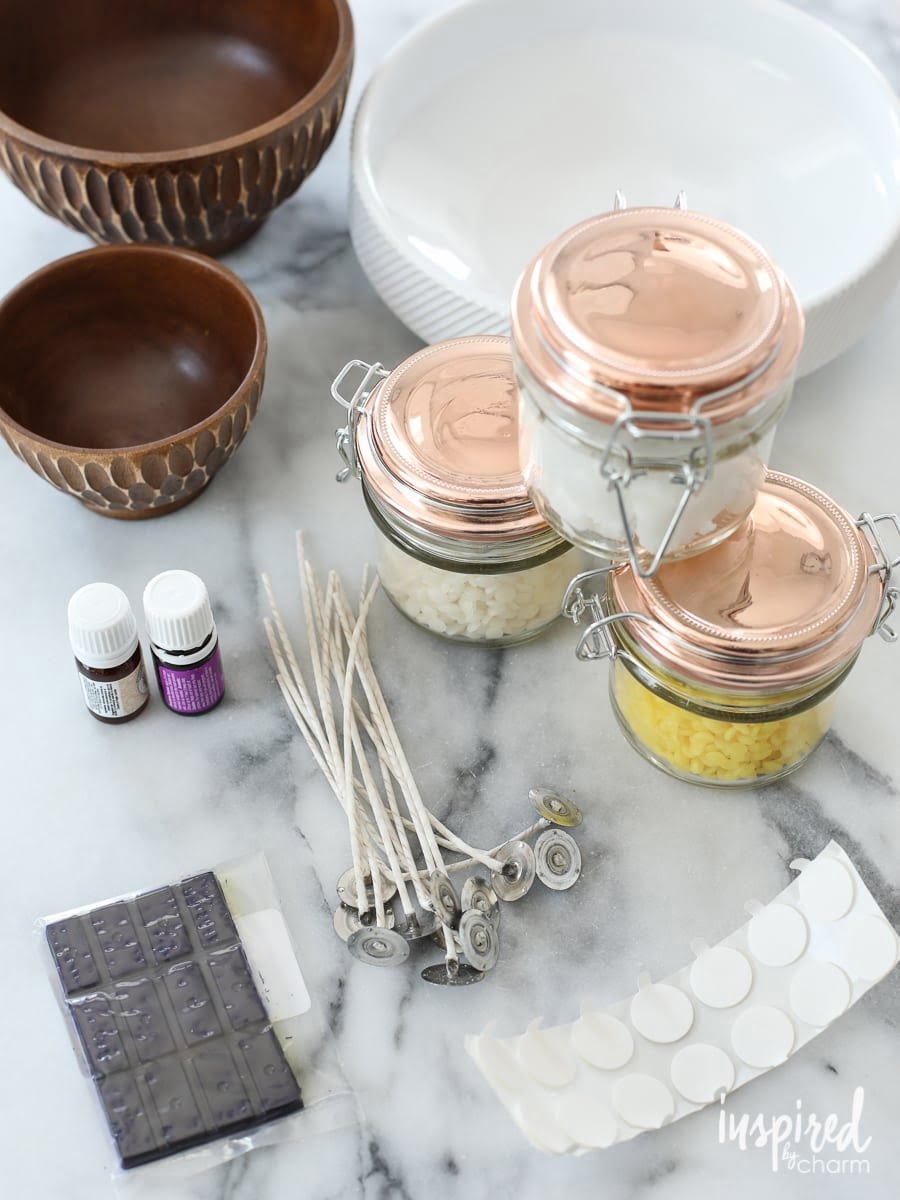Introduce Candle Safety Practices at the Start
It is important to start any candle-making session on a safe note by introducing safety practices beforehand. First and foremost, ensure that the area in which you will be making your candles is cleared of any flammable objects. Make sure that there is a smoke detector present in the area, and that all exits are clear and easy to access. Before beginning, go over the dangers of hot wax with your students or participants; remind them to use protective items like oven mitts, heat resistant gloves, and long-handled tools when handling the items needed for candle making. Additionally, practice proper wick placement with everyone involved in order to avoid an uneven burn. Furthermore, caution children about not touching anything with their bare skin until it has had time to cool off completely after being completed.
Discuss The Power of Aromatherapy in Candle Making
Aromatherapy is an ancient and powerful healing art. It involves the use of aromatic essential oils extracted from flowers, leaves, fruits, barks and other natural sources to provide physical and emotional benefits to those who practice it. Its applications are vast and range from assisting in relaxation, calming inflammation, relieving stress or sleeping disorders, or even providing medical treatments for various ailments. Aromatherapy can also be used in the art of candle making. There are many types of natural waxes like beeswax, soy wax or coconut wax that can be scented with a variety of beautiful essential oils that release their therapeutic properties when lit. Candle makers might choose to use a single scent or combine them together to create new aromas and promote physical wellbeing while adding beauty and ambiance to any room they fill with light! Making candles with aromatherapy oils is rewarding not only because you’re doing something creative but also because you’re able to reap all the wonderful benefits that come with it.
Different Candle Wax Types and How They Impact the Creation Process
There are a variety of candle waxes available for making candles, each with their own features and benefits. The type of wax you choose to make your candles affects the creation process in a number of ways. Paraffin is the most common type of wax used in candle making, as it is a mid-range priced wax that provides an excellent scent throw and a long lasting burn. It also provides good structure and flames while burning, so it is great for creating pillars or tapers. Beeswax is another popular choice for candle making due to its ethical sourcing process; made from beeswax collected from beekeepers, it has a distinctive yellow color and honey-like smell that can enhance fragrances used in the candle. Soy wax offers environmental benefits due to its natural materials and ability to be reused multiple times – it requires a lower temperature to melt and results in an even, clean burn with no accumulated buildup of chemicals around wick or container. Palm wax is harder than other types of waxes and so gives different sculpting possibilities while burning; they tend to have an attractive crystallized pattern when solidified and have slightly longer burn times compared to paraffin candles. Finally gel candles use a special polymer blend that holds more fragrance oil than standard paraffin blends – this means more intensity for you favorite scents!
Overall, the type of wax you choose for your project can affect not only the aesthetic qualities but also burning time, texture, melting point, cost efficiency, toxicity levels, environmental impact – all factors that need to be taken into consideration before you start creating the perfect candle. Additionally certain oils such as coconut oil can have added effects depending on what properties you would like your finished product to possess; however most oil additives offer increased flexibility with molds but require additional preparation steps when pouring melted wax over them since they will not naturally blend with standard wax types without being heated first which could complicate any designs you are hoping to achieve.
Talk About Different Candle Containers and Accessories
When it comes to candle making ideas, one of the most important parts of the process is thinking about what type of containers and accessories to use. Whether you’re making pillar candles and votives or smaller tea light candles, there are plenty of options out there. From standard glass containers to unique ceramic molds, each item you choose can help create a unique finished look. To further customize your creations, you can also choose decorative items like silicone molds and wax embeds. These come in an array of shapes and sizes so you can get as creative as you want. Additionally, many sets come with wicking supplies, metal tins for melting waxes and even special thermometers for getting the perfect temperature.
Discuss Creative Ways to Decorate or Embellish Candles
Candle making can be a fun and creative activity to bring out your inner artist. One popular way of decorating candles is by adding wax embellishments such as shapes, stencils, glitter, or stick-on decorations. You can also explore the potential of embedding items within the wax such as leaves, rocks, dried flowers or other natural elements. Another common technique is to wrap cords and ribbons around the wax in different shapes and designs. You can even use other candles as molds for painting and sculpting to create unique layered candles with raised relief messages or shapes. Additionally, you can pour melted wax over decorative fabrics or rice paper to create interesting marbling or color patterns on the candle surface. If you want to add further decoration you could use decoupage techniques with tissue paper designs or traditional imagery to get some really nice results!
Feature Techniques for Making Soy and Beeswax Candles
Candle making is becoming increasingly popular among DIYers interested in home décor. Popular materials used to make candles include soy wax and beeswax. For the novice candle maker, Pinterest is a fantastic source of ideas. Creating beautiful candles requires knowledge of the proper techniques to produce an even texture and a level of perfection.
When making soy candles, it is important to use a wax that has been specifically made for candle making; regular cooking soy wax should not be used. A wick must be tested prior to use, as some wicks can cause soot when melted into the pot. If you notice soot during the melting process you must decrease heat and/or increase melt time. Furthermore, once the wick is placed into position and the wax starts to cool, shifting forces can cause misalignment or unevenness in top surface if not properly compensated for.
Beeswax candles require slightly different techniques for production than those used for soy candles. Production begins with melting raw beeswax blocks at a low temperature of approximately 140°Fahrenheit-145°Fahrenheit, depending on ambient temperature and humidity levels in your workspace. Care must then be taken when adding other ingredients such as essential oils because certain combinations can dramatically reduce burning performance (diminished flame stability, smoke production etc.). Further steps involve layering colors together to form unique effects or themes around holidays such as Red & Green or Autumn colors such as browns & oranges at Halloween themed events!
Once you have mastered basic candle making techniques, experienced makers suggest exploring more innovative ideas by incorporating additional elements such as gold flakes or pewter pieces embedded in layers of wax or adding glitter which adds sparkle but also keeps flames contained –additional ways to get creative with your creations!
Discuss The Benefits of Reusable Candle Molds and Melting Containers
Reusable candle molds and melting containers can be highly beneficial when it comes to making candles. These items are designed to make the candle-making process easier, faster, and more efficient. They also save time and money as you don’t have to create a new mold every time you want to make an individual candle.
Reusable molds come in a variety of shapes, sizes, and materials to meet virtually any candle project requirement. There are wax molds made from silicone that are durable and easy to clean up after use; polyethylene plastic molds that hold their shape better; metal molds which are great for making unique shaped candles; ceramic molds for creating intricate designs with your melted wax; and even beeswax sheet kits which provide an easy solution for beginners.
When it comes to melting containers, some feature a double boiler base design that allows two different types of waxes to be heated separately at the same time – great for soy/paraffin combos or multi-wicked candles. Another type of melting container is a paraffin heated pot with insulation around the sides so the user doesn’t have as much risk of burning his/herself while pouring boiling hot wax into their molds. Other hot pots may have removable elements so you can easily replace them when needed.
Using reusable candle molds and melting containers can greatly improve your overall experience in crafting handmade candles since these tools allow you to work quickly and efficiently while reducing waste. Plus, not having to buy or create a new mold each time you want to make an individual candle saves both money and resources!
Explore Natural Dyes and How They Affect Candle Making
Candle making with natural dyes provides a great opportunity to explore the various colors created with all-natural materials. With natural ingredients, such as vegetable matter and minerals, to experiment with, you can create an unlimited range of colors without having to purchase any synthetic pigments or dyes. Furthermore, when making candles using natural dyes, you gain the ability to tailor your results in a number of ways – for instance, by varying the heat applied during the melting process or simply through blending different combinations of pigment-rich ingredients together. This allows you to craft candles in specific colors, as well as add texture and dimension to your candles — giving them an energetic and unique atmosphere. Additionally, experimenting with natural dyes also gives makers insight into how color reacts naturally to different environmental factors like light exposure or burning temperatures — creating complex patterns along the way. With just a few tips from Pinterest (simple candle making tutorials are easily found), you too could begin exploring the vast potential that all-natural dyes have for crafting beautiful and unique homemade candle creations!
Create an In-Depth Guide to Seasonal Candle Making
Create an in-depth guide to seasonal candle making on your Pinterest board with the help of different professionals and resources. Gather decorators, perfumers, designers, and other professionals who specialize in creating seasonal candles, detailing their process and tips for each season. Make sure to include DIY tutorials as well such as making holiday-themed candle containers out of recycled items and experimenting with all types of scent combinations suited for different times of year. Invite home decor magazines to share their holiday-specific décor ideas featuring candlelight to get others inspired. Provide information on products like waxes, dyes, scents and wicks so that even beginners can make stunning homemade creations. Another way to use your Pinterest board is by utilizing the “pin it” feature. When people land on a website or blog post they love related to candle making, they can easily pin the post onto their boards which will broadcast it to your own audience!
Feature Different Designs that Can Change the Look of Your Candles
Looking to spice up your candle making routine? There are really a multitude of creative designs that you can add to your candles to make them stand out even more! Some popular examples include using colorful wax shaped like fruits and vegetables, adding glitter or dried flowers for a unique look, or experimenting with the type of wick; for example, a different colored hemp wick may provide a completely new visual effect. Embedding an array of decorative items like wooden beads, seashells and gemstones into the wax before it sets can also create interesting visuals. Additionally, molding each layer of wax in different shapes and sizes can also be very attractive when assembled together in one candle. Don’t forget to explore various reverse layered (different color wax) pillar styles as well! You could even take it one step further and master simple swirl designs as well as layered style full-wall constructions within your pillars. With a little creativity, you can make every candle unique!

Welcome to my candle making blog! In this blog, I will be sharing my tips and tricks for making candles. I will also be sharing some of my favorite recipes.

